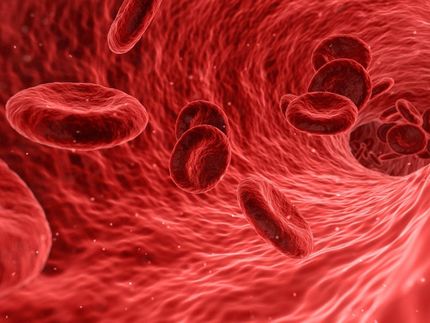Small molecule inhibitor shows promise in precision cancer targeting
cancer cells with mutations in BRCA1 or BRCA2 genes, which serve a vital role in preserving the integrity of the genetic code, are key targets for cancer therapeutics. Yet, few agents can selectively eliminate cells deficient in BRCA, and none can do so without the risk of inducing drug resistance. But scientists at the Lewis Katz School of Medicine at Temple University (LKSOM) now think they can help overcome that problem, thanks to their discovery of a small molecule that selectively kills BRCA-deficient cancer cells by blocking the activity of an alternative DNA repair pathway.
According to Richard T. Pomerantz, PhD, Assistant Professor of Medical Genetics and Molecular Biochemistry in the Fels Institute for Cancer Research at LKSOM, and senior investigator of the study, cancer cells deficient in BRCA proteins, which normally promote a major mechanism of DNA repair known as homologous recombination, become dependent on an alternative DNA repair pathway mediated by a protein called RAD52. Dr. Pomerantz and colleagues are the first to show that the selective inhibition of RAD52 with a small molecule known as 6-hydroxy-DL-dopa (6-OH-dopa) can block the growth of BRCA-deficient cancer cells in vitro, including cells obtained from leukemia patients.
"Every cell has redundant DNA repair pathways," Dr. Pomerantz explained. "If the main DNA repair pathway, BRCA-mediated homologous recombination, becomes defective, cancer cells adapt and still proliferate."
Previous studies had shown that the suppression of RAD52 in cells that already harbor mutations in BRCA1 or BRCA2 causes the cells to die. Cells with normally functioning BRCA proteins, on the other hand, are unaffected by the loss of RAD52 activity, because the primary BRCA-mediated DNA repair mechanism is intact.
Prior to the new study, however, no one had identified a small molecule inhibitor of RAD52. RAD52 works by forming a large ring structure that binds to single strands of DNA, and similar to many other DNA-binding proteins, it lacks enzymatic activity. Those features present significant challenges in drug discovery, and in fact, DNA-binding proteins traditionally have been considered to be beyond the reach of even small molecule inhibitors.
Dr. Pomerantz and colleagues screened more than 18,000 compounds before finding 6-OH-dopa, the only small molecule that consistently prevented RAD52 from binding to single-stranded DNA. Experiments in cells showed that 6-OH-dopa is specific for RAD52 and acts by disrupting RAD52 ring structures. In BRCA-deficient cells, treatment with the molecule resulted in reduced cell growth and viability. In contrast, BRCA-proficient cells were mostly unaffected, demonstrating the potential for a new form of precision medicine.
"The effect is like knocking out two legs of a table that normally is supported by four legs. One leg is lost to BRCA mutations and another to RAD52 inhibition. With only two legs left, the table collapses," Dr. Pomerantz explained. "Normal cells are left on three legs, due to only RAD52 inhibition, so they survive."
The discovery of 6-OH-dopa has therapeutic implications for more than just breast and ovarian cancer - the diseases most widely associated with BRCA mutations. Cancers of the lung, prostate, and pancreas, as well as leukemia, also exhibit BRCA deficiencies.
Dr. Pomerantz is moving forward with plans to further develop the small molecule and to identify additional RAD52 inhibitors for testing in BRCA-deficient animal models. With support from the National Institutes of Health (NIH) and the Department of Defense (DoD) and collaborations with Dr. Tomasz Skorski of the Department of Microbiology and Immunology and Fels Institute for Cancer Research at LKSOM, with researchers at the Moulder Center for Drug Discovery at LKSOM, and with scientists at the Rockefeller University, Dr. Pomerantz is hopeful that this line of research will eventually lead to clinical trials.























































